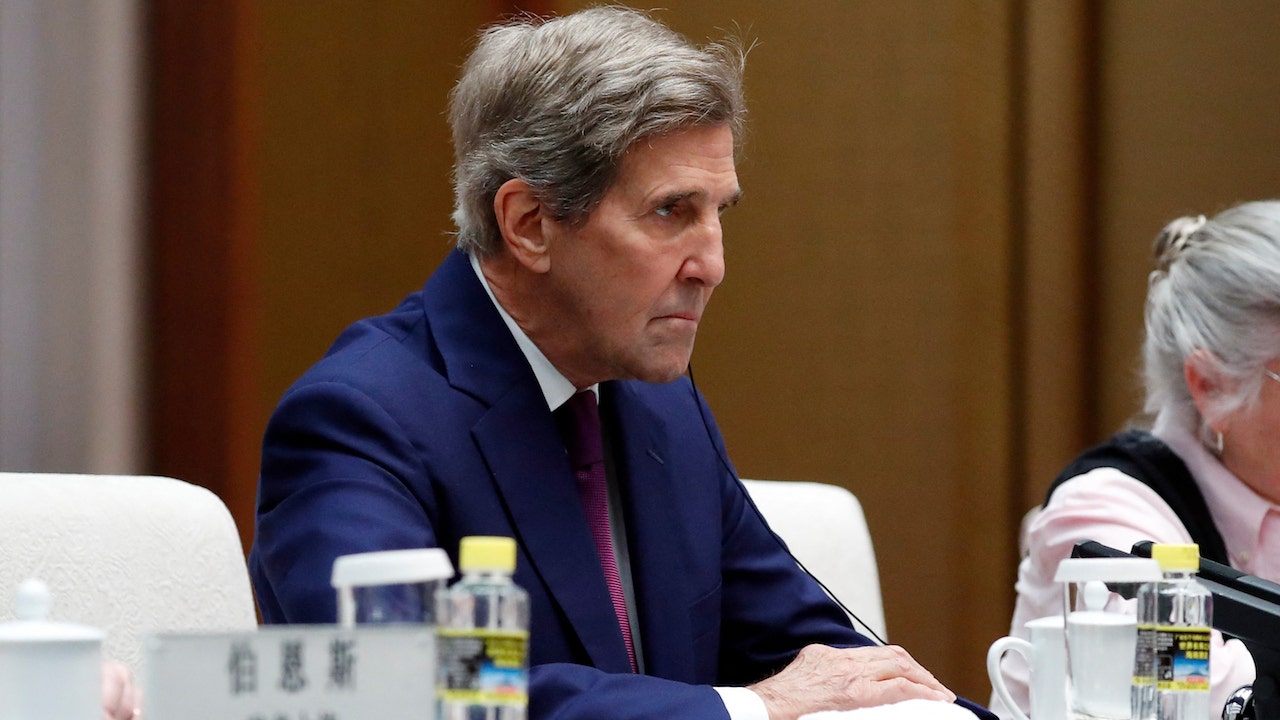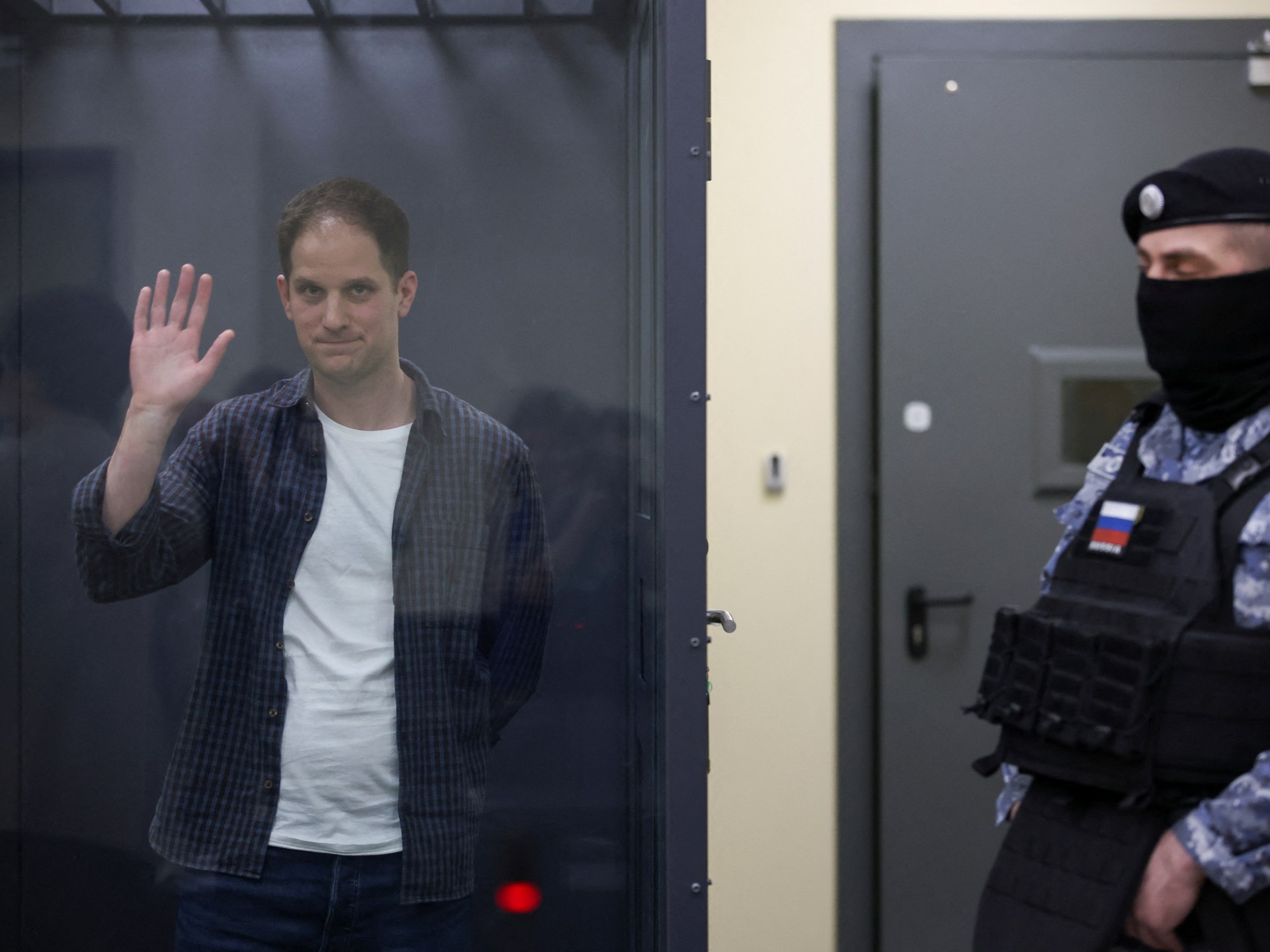World
Nearly 300 killed in Gaza in 24 hours as Hamas, Netanyahu trade threats
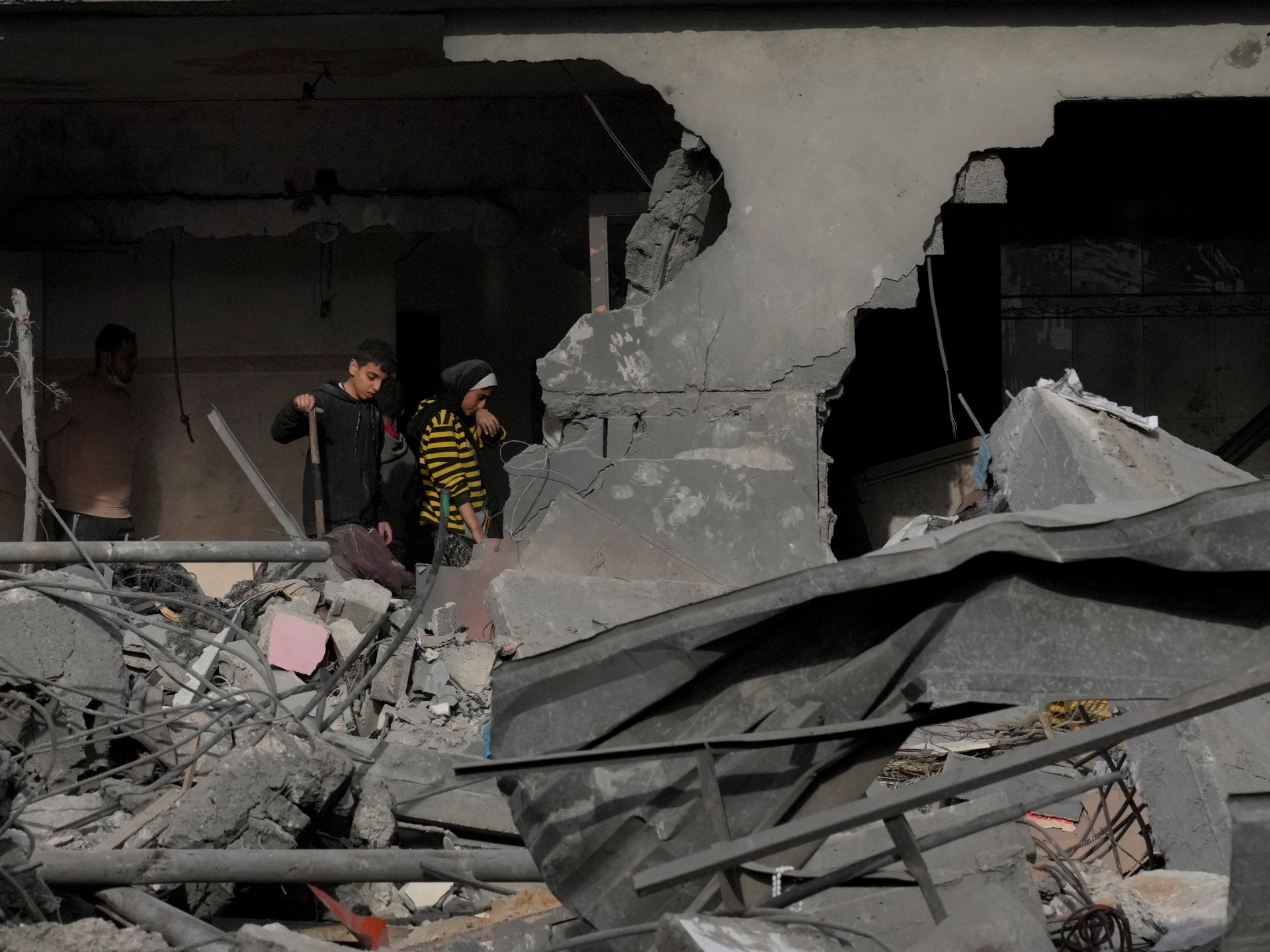
Fierce fighting has killed nearly 300 Palestinians in the past 24 hours in Gaza as the Palestinian armed group Hamas and Israeli Prime Minister Benjamin Netanyahu exchanged threats.
Israeli raids continued across the besieged territory on Sunday, including in northern Gaza where entire neighbourhoods have been flattened by air strikes and where ground troops that have been operating for more than six weeks continue to face heavy resistance from Hamas fighters.
Gaza’s health ministry spokesman Ashraf al-Qudra told Al Jazeera in a telephone interview that 297 people were killed and more than 550 wounded in the past 24 hours in Gaza, bringing the death toll since the start of the war on October 7 to more than 18,000 – the majority of them women and children.
Hamas, Netanyahu exchange threats
Israeli attacks on Gaza continued for the 65th day on Sunday, with Hamas warning that no captives it took on October 7 would leave Gaza alive unless its demands were met.
“Neither the fascist enemy and its arrogant leadership… nor its supporters… can take their prisoners alive without an exchange and negotiation and meeting the demands of the resistance,” Hamas spokesman Abu Obeida said in a televised broadcast.
Israeli Prime Minister Benjamin Netanyahu, on his part, called on Hamas to surrender.
“It is the beginning of the end of Hamas. I say to the Hamas terrorists: It’s over. Don’t die for [Yahya] Sinwar. Surrender now,” he said, referring to the Hamas chief in Gaza.
Hamas earlier said Israel launched a series of “very violent raids” targeting the southern city of Khan Younis and the road linking it to Rafah near the border with Egypt.
Gaza residents also reported fierce fighting in Gaza City’s neighbourhood of Shujayea and in the Jabalia refugee camp, a dense urban area.
The Palestinian Red Crescent Society (PRCS) said Israeli forces raided an area near the UNRWA clinic in the heart of the Jabalia camp where its emergency teams and medics are operating a medical post.
“The team consists of nine doctors, nurses, and volunteers. The surrounding area is currently under bombardment, posing a constant threat to the lives of medical teams and the wounded,” the Red Crescent said in a post on X on Sunday evening.
🚨IOF has invaded the area near the UNRWA clinic in the midest of the Jabalia camp, where the PRCS EMS teams 🚑operate an advanced medical post. The team consists of 9 doctors, nurses, and volunteers. The surrounding area is currently under bombardment, posing a constant threat… pic.twitter.com/JcFpL1IRRS
— PRCS (@PalestineRCS) December 10, 2023
In Shujayea – where Israeli snipers and tanks positioned themselves among the abandoned buildings – residents said the dead and wounded were left in the streets as ambulances could no longer reach the area.
“They are attacking anything that moves,” Hamza Abu Fatouh told the Associated Press.
‘Journey of death’
Israel had ordered the evacuation of northern Gaza early in the war but tens of thousands of people have remained, fearing that the south would be no safer or that they would never be allowed to return home.
Heavy fighting was also under way in and around the southern city of Khan Younis on Sunday.
“The mass exodus continues. Those fleeing northern Gaza in order to survive are describing it as the ‘journey of death’,” said Al Jazeera’s Tareq Abu Azzoum, reporting from Rafah in southern Gaza.
“Those in Khan Younis have been ordered to flee to al-Mawasi on the coastline – an area considered to be very dangerous,” he added.
“It’s also a region without any infrastructure – including access to water, food and electricity. There’s also no access to toilets. The situation is deteriorating extremely fast now.”
Gaza’s health situation ‘catastrophic’: WHO
The World Health Organization’s 34-member executive board on Sunday adopted a resolution calling for immediate, unimpeded aid deliveries to Gaza.
“Gaza’s health system is on its knees and collapsing,” said WHO chief Tedros Adhanom Ghebreyesus, with only 14 of 36 hospitals functioning at any capacity.
The emergency action, proposed by Afghanistan, Qatar, Yemen and Morocco, seeks passage into Gaza for medical personnel and supplies, requires the WHO to document violence against healthcare workers and patients, and to secure funding to rebuild hospitals.
“I must be frank with you: these tasks are almost impossible in the current circumstances,” Tedors said, commending the countries for finding common ground and saying it was the first time any United Nations motion had been agreed to by consensus since the conflict began.
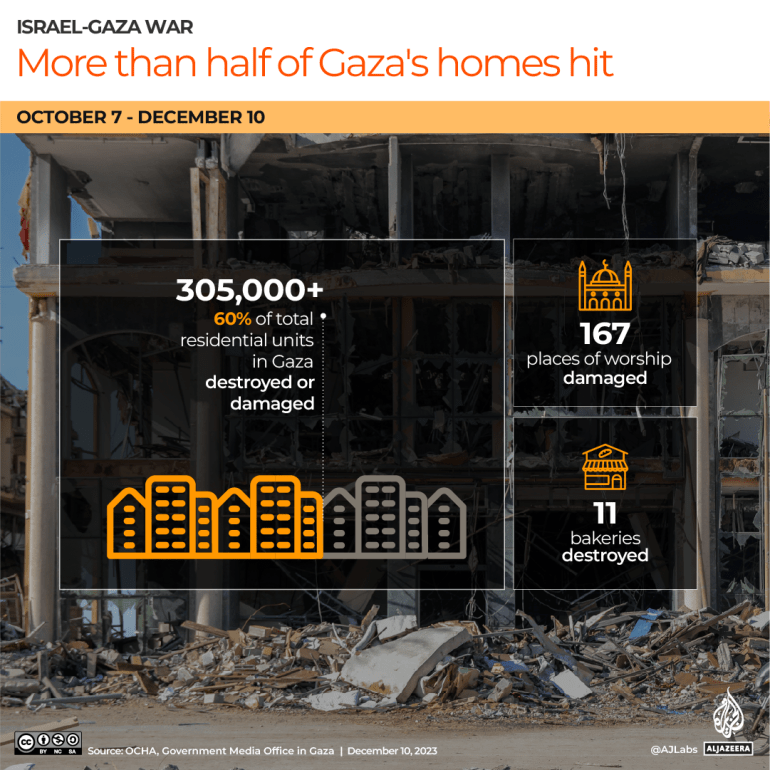
About 90 percent of Gaza’s 2.3 million residents have been displaced within the territory. With very little aid allowed in, Palestinians are facing severe shortages of food, water and other basic goods.
Mustafa Barghouti, a Palestinian politician who heads the Union of Palestinian Medical Relief Committees with 25 teams working in Gaza, said: “Half of Gaza is now starving.”
Barghouti said 350,000 people had infections including 115,000 with severe respiratory infections and lacking warm clothes, blankets and protection from the rain.
He said many were suffering from stomach complaints because there was little clean water and not enough fuel to use to boil it, risking outbreaks of dysentery, typhoid and cholera.
“To add insult to injury, we have 46,000 injured people who cannot be treated properly because most of the hospitals are not functioning,” he said.
Renewed US support to Israeli attacks
Israel intensified its bombardment on Gaza after the latest United States veto on a UN Security Council resolution calling for a ceasefire. The vote was triggered by UN Secretary-General Antonio Guterres who invoked Article 99 of the UN Charter – a measure unused in decades.
The article allows the Secretary-General to “bring to the attention of the Security Council any matter which in his opinion may threaten the maintenance of international peace and security”.
The US also pushed through an emergency sale of about 14,000 tank shells worth more than $100m to Israel without congressional review, the Pentagon said on Saturday.
Fending off criticism over the sale from Palestinians and rights groups who say it does not align with Washington’s stated effort to press Israel to minimise civilian casualties, US Secretary of State Antony Blinken told ABC on Sunday that Washington is in almost constant contact with the Israelis “to ensure they understand what their obligations are”.
In an address to the two-day Doha Forum event that started in the Qatari capital on Sunday, Antonio Guterres said he expected the “public order to completely break down soon” in Gaza.
“And an even worse situation could unfold, including epidemic diseases and increased pressure for mass displacement into Egypt,” he added.
Qatar, a key mediator of last month’s seven-day truce, which saw 80 Israeli captives exchanged for 240 Palestinian prisoners and a flow of humanitarian aid, on Sunday said it was still working on a new truce deal.
Qatar’s Prime Minister Sheikh Mohammed bin Abdulrahman Al Thani told the Doha Forum that mediation efforts will continue to stop the war and have all captives released, but “unfortunately, we are not seeing the same willingness that we had seen in the weeks before”.
“Our efforts as the state of Qatar along with our partners are continuing,” he said, adding that Israel’s relentless bombardment was “narrowing the window” for success.

World
Russian warships leave Havana's port after a 5-day visit to Cuba
HAVANA (AP) — A fleet of Russian warships, including a nuclear-powered submarine, left Havana’s port on Monday after a five-day visit to Cuba following planned military drills in the Atlantic Ocean. The exercise has been seen by some as a show of strength by Moscow against the backdrop of tensions as U.S. and other Western nations support Kyiv in Russia’s war on Ukraine.
The submarine, a frigate, an oil tanker and a rescue tug slowly departed from the port on Monday morning.
It’s unclear what the fleet’s next destination is or where it will dock next in the Caribbean, although U.S. officials said days ago that the vessels could possibly also stop in Venezuela.
A fleet of Russian warships left a port in Cuba on Monday.
Officials with the Biden administration said last week that they were monitoring the vessels and confirmed that they did not pose a threat to the region or indicate a transfer of missiles. Still, the United States docked a submarine, the USS Helena, at its Guantanamo Bay Naval Base in Cuba.
The American naval base, located in the southeastern part of the island about 1,000 kilometers (625 miles) from the capital of Havana, is considered by the Cuban government to be illegally occupied territory.
Last week, the Russian ships arrived at the port after the Russian Ministry of Defense reported that the fleet successfully conducted military drills in the Atlantic Ocean, simulating a missile attack on targets that could be more than 600 kilometers (375 miles) away.
The fleet, made up of the frigate “Gorshkov,” the nuclear-powered submarine “Kazan,” the tanker “Pashin,” and the tug “Nikolai Chiker,” was received in Havana with a 21-gun salute.
Cuban President Miguel Díaz-Canel visited the frigate on Saturday and interacted with the sailors, according to a post by the president on the social media platform X, formerly known as Twitter.
The nuclear-powered Russian submarine Kazan leaves the port of Havana, Cuba, Monday, June 17, 2024. (AP Photo/Ariel Ley)
Meanwhile, Cuban Deputy Foreign Minister Carlos Fernández de Cossío rejected the presence of the American submarine at Guantanamo Base, stating it was unwelcome and uninvited.
A State Department spokesperson said last week that Russia’s port calls in Cuba are “routine naval visits” and do not pose any danger.
On Thursday, a day after arriving, hundreds of people lined up to visit the frigate. The ship was also open to the public on Saturday, which is a common practice when vessels arrive at the port.
Canada’s navy patrol boat Margaret Brooke entered the Havana harbor on Friday.
World
Man killed after getting electrocuted in seaside resort hot tub
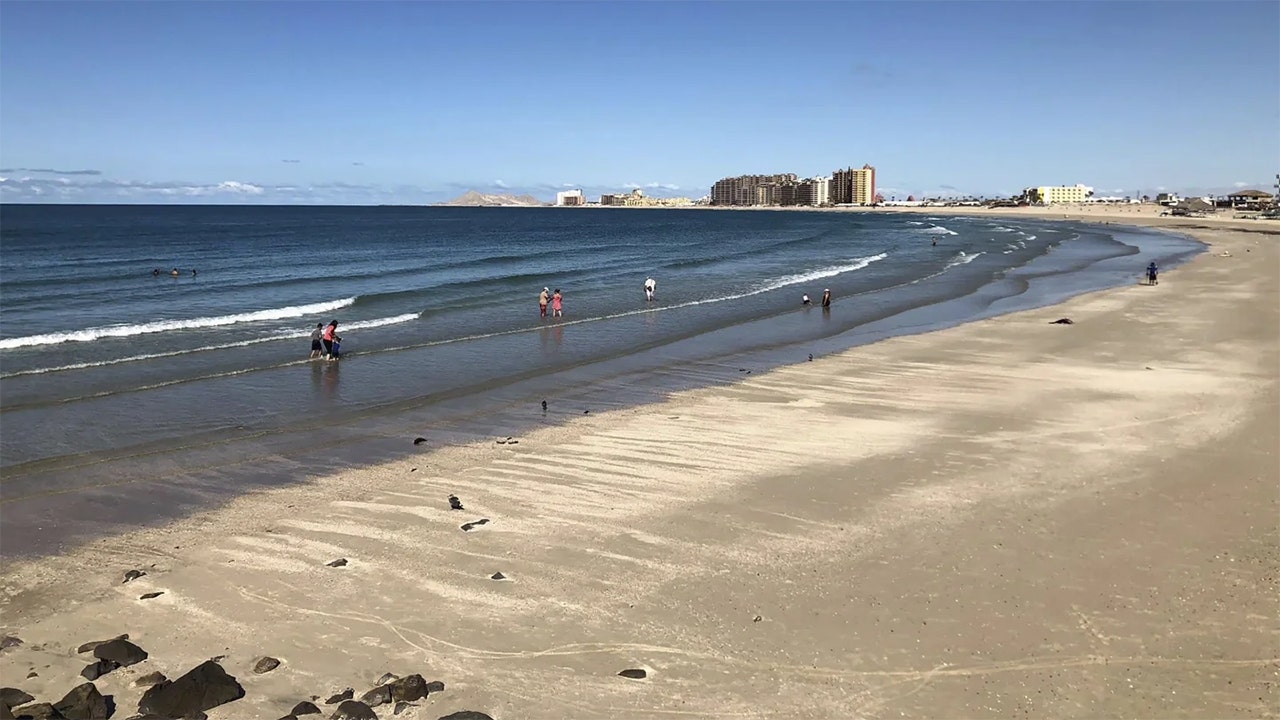
An El Paso, Texas, man vacationing at a private resort in Puerto Peñasco, Mexico, has died after getting electrocuted in a hot tub on Tuesday, according to reports.
A local NBC station in El Paso reported that the Mexican State of Sonora General Prosecutor’s Office said the man, only identified as 43-year-old Jorge N., and another person, Lizeth, N., were at the Sonoran Sea Resort and in a hot tub just after 10 p.m.
The prosecutor’s office said possible wiring failure may have caused Jorge to get electrocuted, while Lizeth reportedly suffered life-threatening injuries.
Lizeth was taken to a nearby hospital where she was reportedly informed she suffered from burns consistent with electric shock.
VACATIONS THAT ENDED TRAGICALLY FOR TRAVELERS INSIDE AND OUTSIDE OF THE US
This September 2018 photo shows the beach at the popular tourist resort of Puerto Peñasco in the state of Sonora, Mexico. (AP Photo/Annika Wolters)
She was then transported back to the U.S., where she was listed in critical condition, the general prosecutor’s office said.
During the investigation, investigators spoke with someone who is familiar with Jorge and Lizeth, who said she saw the two of them were not moving in the hot tub.
US WARNING ON MEXICO SPRING BREAK TRAVEL, TOP THREATS FACING AMERICANS
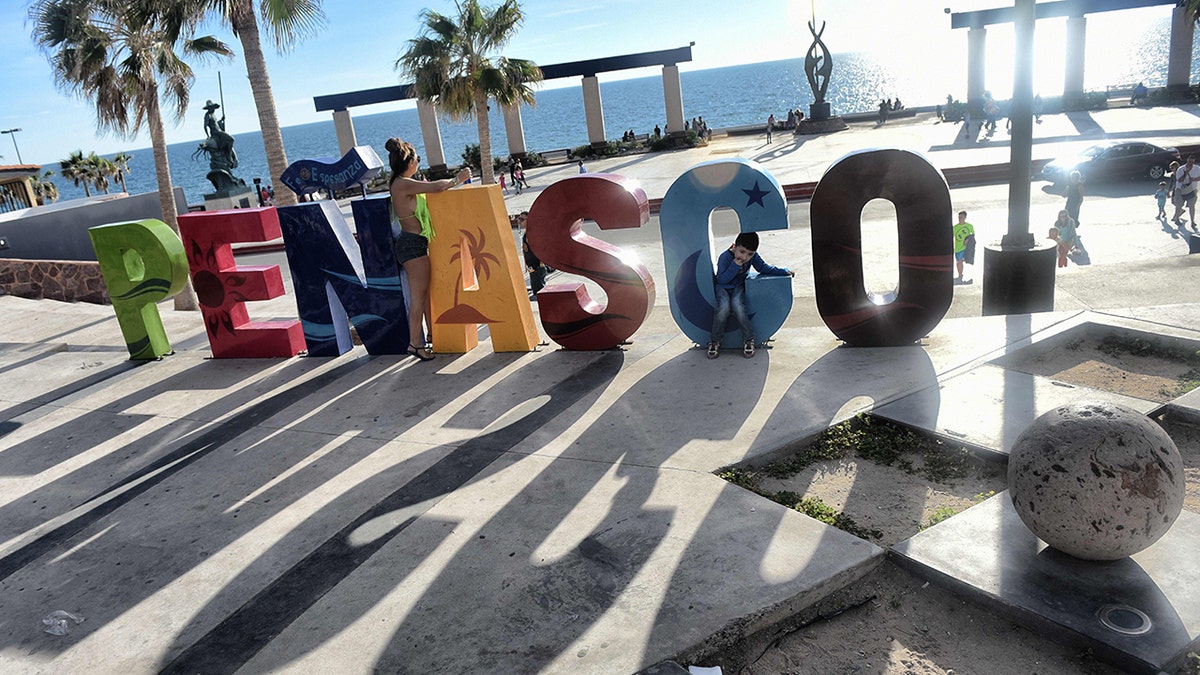
A man was electrocuted to death, and another person was burned while they were in a hot tub at a resort in Puerto Penasco, Mexico (PEDRO PARDO/AFP via Getty Images)
The witness also reportedly told investigators she attempted to get into the hot tub after discovering the couple was non-responsive, but she was shocked.
The witness told investigators that was the moment she called for help.
The Attorney General’s Office of the State of Sonora is investigating the matter.
World
World's largest arms expo in Paris marred by ongoing conflicts
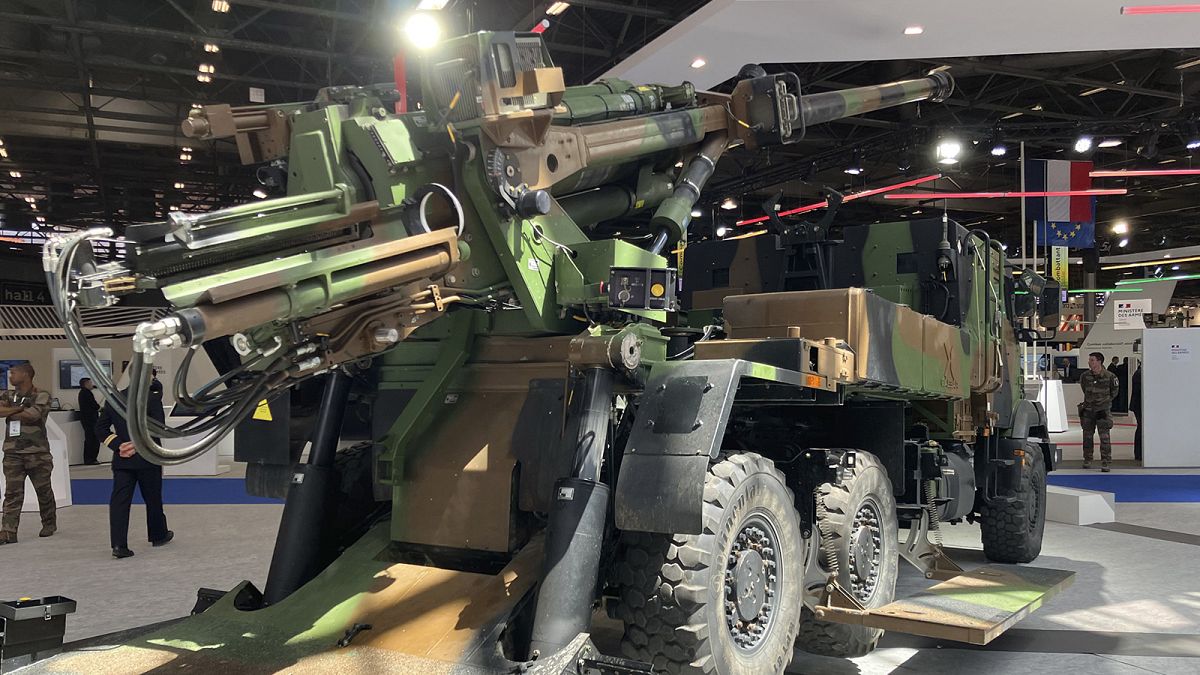
For the first time, Israel was barred from the event due to its ongoing offensive in Gaza. Other absentees include Russia and Belarus due to the ongoing war in Ukraine.
From drones to armoured vehicles, to various artillery systems — the world’s largest defence and arms exhibition opened on Monday in Paris, showcasing the latest military technology.
However, the event has been impacted by ongoing worldwide conflicts. For the first time, Israel has been barred from participating in the international defence expo for its offensive in Gaza.
A French district court has ruled that the event organisers must ban anyone working for or representing Israeli firms from participating in the event.
Seventy-four Israeli firms were set to exhibit weapons at the fairground event north of Paris near the international airport before the ongoing legal battle ensued.
The event organiser Coges, led by Charles Beaudoin, has said they would appeal the latest court decision “as soon as possible,” but the exhibition already began Monday and runs until Friday.
Russia and Belarus are also noticeably absent due to the full-scale invasion of Ukraine.
The Eurosatory conference is held every two years and attracts more than 2,000 exhibitors from 61 countries and other entities.
This includes the EU Commission – relatively new to the event – which has ramped up its defence industry strategy since the war in Ukraine.
One of the strategies includes the EDIRPA (European Defence Industry Reinforcement through Common Procurement Act), a plan to incentivise EU member states to buy weapons jointly.
Another is the European Defense Fund (EDF) which provides grants to defence companies gathered in consortia of at least three EU states – another tool to strengthen companies in the face of their American competitors.
“The war in Ukraine has enabled the European Union and the European Commission to get a little more involved in defence issues, particularly defence and armaments,” said Léo Péria-Péigné, arms expert at the French Institute of International Relations (Ifri).
“As a result, they have a more legitimate presence at this show today than they did two years ago. They are willing to invest more in order to carry more weight in the future,” he told Euronews.
-

 Politics1 week ago
Politics1 week agoNewson, Dem leaders try to negotiate Prop 47 reform off California ballots, as GOP wants to let voters decide
-

 Movie Reviews1 week ago
Movie Reviews1 week ago‘Darkest Miriam’ Review: Britt Lower in a Marvel of a Drama About a Young Librarian’s Loves and Fears
-

 Politics1 week ago
Politics1 week agoGun group vows to 'defend' Trump's concealed carry license after conviction
-

 World1 week ago
World1 week ago‘Bloody policies’: Bodies of 11 refugees and migrants recovered off Libya
-

 Politics1 week ago
Politics1 week agoShould Trump have confidence in his lawyers? Legal experts weigh in
-

 Politics7 days ago
Politics7 days agoGOP releases Jan. 6 clip of Pelosi saying 'I take responsibility' as she discussed National Guard absence
-
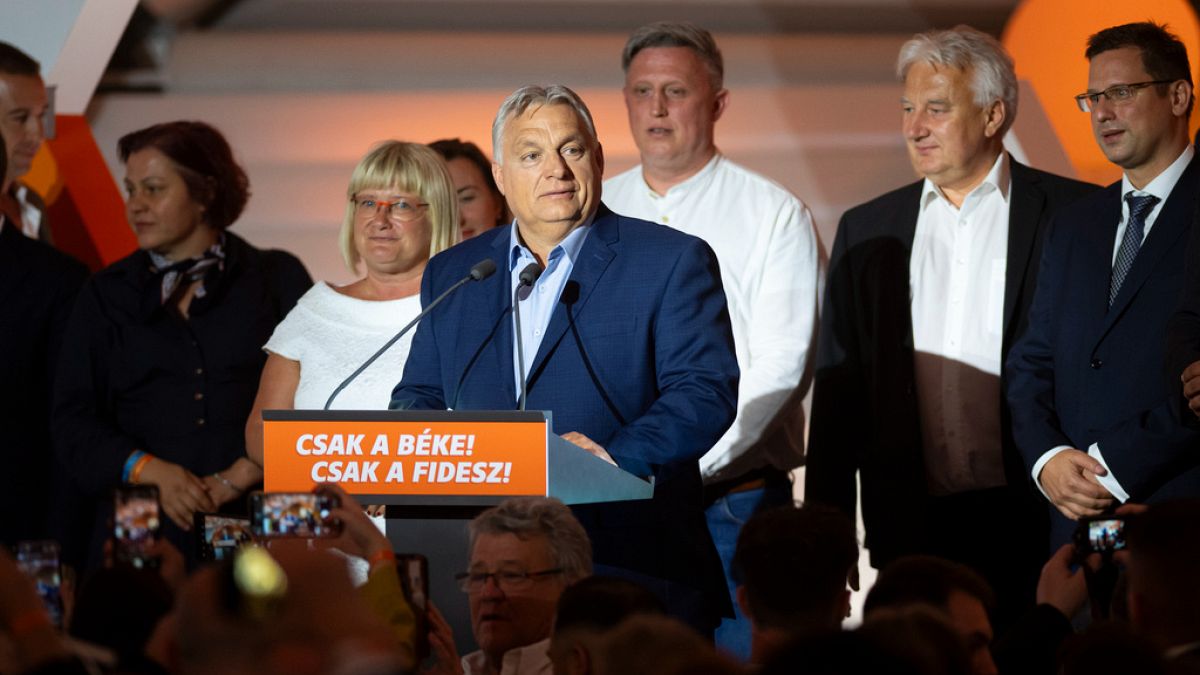
 World1 week ago
World1 week agoOrban party loses major support in Hungary's EU election
-

 News1 week ago
News1 week agoTrump to escalate blame on trial judge Juan Merchan if sentenced to prison



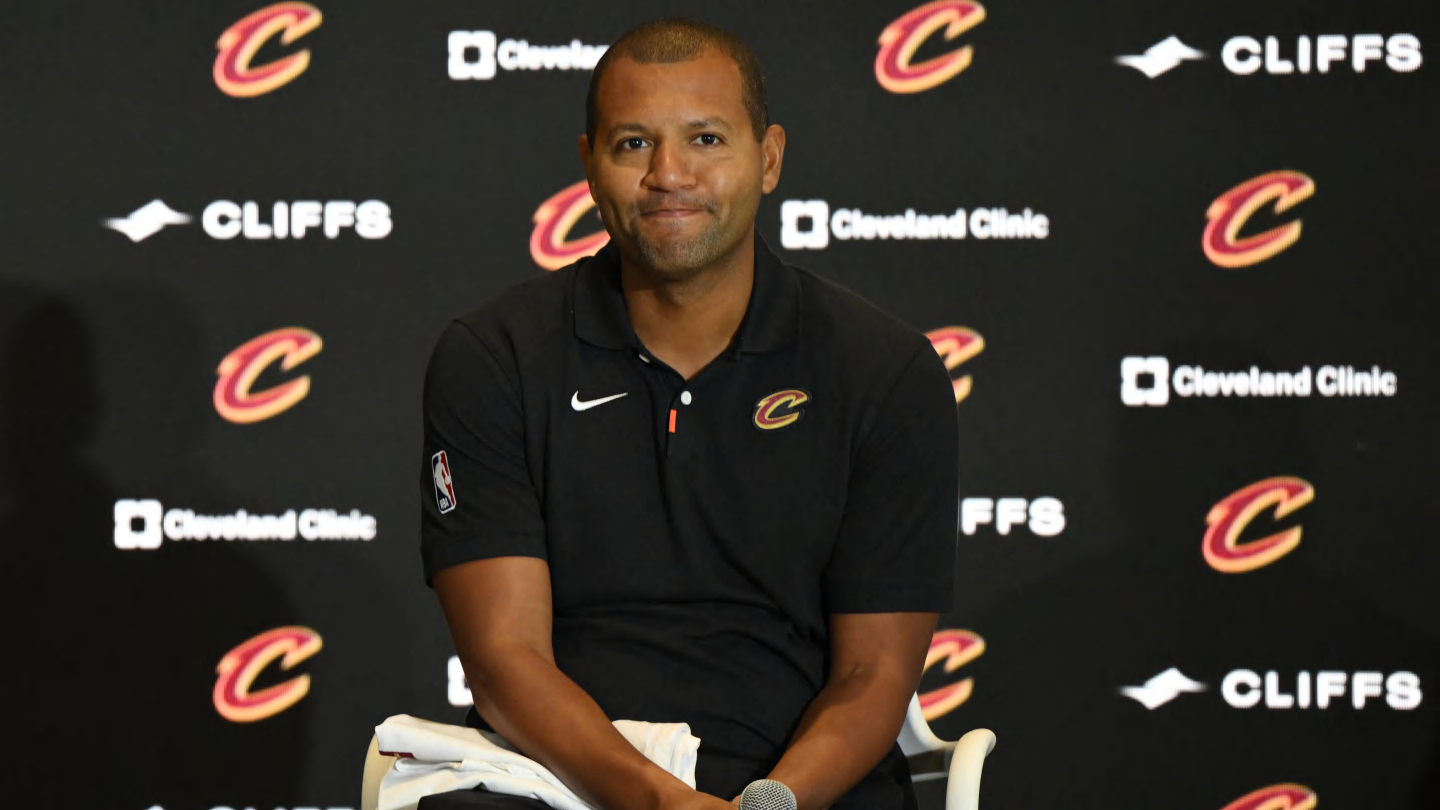


:quality(70)/cloudfront-us-east-1.images.arcpublishing.com/adn/IKXE3YN5YFCOJKTE3V5A52QROI.jpg)






